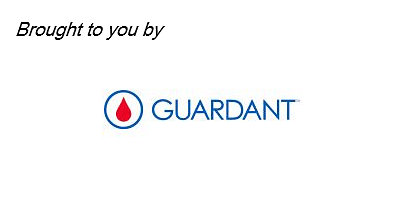Detecting residual cancer is important as the presence of ctDNA after treatment or surgery could mean that there are still small traces of cancer cells that have remained in the body. Known as minimal residual disease (MRD), the detection of MRD can help doctors determine if further intervention such as chemotherapy should be considered to prevent a relapse.
“Because it is so microscopic or hidden, it is possible that there is still cancer remaining that the surgeon was not able to see,” explains Dr Olsen. “In that situation, a liquid biopsy can help doctors to decide if they should do something extra beyond the surgery or if they should try another course of treatment.”
This is currently being trialled in cancers that are common and highly curable such as colon and breast cancer.
As for the early detection and screening protocols, which are also at the clinical research stage, Dr Olsen says the liquid biopsy assay must be very sensitive in order to find the cancer DNA at very low concentrations in the blood.
This can help patients become aware of their cancer even before it becomes symptomatic or even life-threatening.
Current limitations and the future ahead
While liquid biopsies can be helpful in one’s cancer journey, Dr Olsen recognises their limitations. For example, when it comes to early detection, the challenge is to determine what the right solutions or next steps are when someone receives a positive test result.
“At this point, we are aware of the concerns about how to confirm if it is truly positive and what should be done with that information,” he acknowledges. “That is why we are careful about how we design these studies and ascertain what the appropriate follow-up is, especially when healthy people receive a positive test result.”
In the case of colon cancer, typically a slow-growing cancer, Dr Olsen notes that a colonoscopy should be enough to rule out the possibility of cancer. However, false positives can get more complicated for cancers that do not have screening tests, such as pancreatic cancer.
“Pancreatic cancer is very aggressive,” explains Dr Olsen. “Even if it is a false positive – you don't find it in the initial scan but tested positive for it – most doctors will likely follow up vigilantly with the patient.”
Dr Olsen explained that for metastatic disease, lack of ctDNA detection (a false negative result) is associated with a better prognosis. Metastatic cancers that do not release significant amounts of DNA into the bloodstream are less aggressive. People with such types of cancers tend to live longer.
Another scenario is a false negative result when screening healthy individuals. This means that the person goes on to develop cancer even though the ctDNA test was negative. This is expected to be very rare, says Dr Olsen.
“Most healthy people who undergo screening do not have cancer, therefore a negative result is expected most of the time. However, cancer may be present even if tumor DNA is not detected in the blood. This is one of the reasons that, until we learn more, liquid biopsy should complement but not replace standard cancer screening procedures,” he adds.
Liquid biopsies are a non-invasive and low-risk procedure, which reduces the patient burden. Patient access to these tests can increase access to important clinical information, potentially lower overall healthcare costs, and possibly lead to better clinical outcomes as more patients are matched with effective therapies, notes Dr Olsen.
“There has been encouraging feedback from doctors and patients who appreciate the convenience, rapid turnaround time and not having to go in for an additional surgical procedure,” he says.
For more information, visit
Guardant Health.

